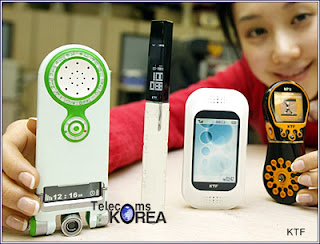Mockingjay - Advanced Design
Tuesday, March 27, 2012
Thursday, February 2, 2012
The Elements of Interaction Design:
Motion: the act of creating an action
Space: provides an area for motion whether in 2D or 3D
Time:an abstract concept in the idea of which we rate speed by
Appearance: the way in which we perceive and puzzle out how an object is to be used through assumption
Texture: conveys the same message as appearance as well as emotions
The Laws of Interaction Design:
Moore's: predicted that every 2 years the number of transistors on integrated circuits will double. Things get faster, smaller, and better every 2 years.
Fitts': predicts that the time required to rapidly move to a target area is a function of the distance to the target and the size of the target
Hick's: the time it takes for a person to make a decision as a result of the possible choices he or she has
Magic Number Seven: states that the number of objects an average human can hold in working memory is 7 ± 2
Tesler's: every application must have an inherent amount of irreducible complexity
Poka-Yoke: a Japanese term that means "fail-safing" or "mistake-proofing". A poka-yoke is any mechanism in a lean manufacturing process that helps an equipment operator avoid (yokeru) mistakes (poka). Its purpose is to eliminate product defects by preventing, correcting, or drawing attention to human errors as they occur
Direct and Indirect Manipulation: the ability to either touch something directly or indirectly
Feedback and Feedforward: feedback is an indication that something has occurred and may help predict the future.Feed-forward, a term describing an element or pathway within a control system which passes a controlling signal from a source in the control system's external environment, often a command signal from an external operator, to a load elsewhere in its external environment.
Characteristics of Good Interaction Design:
Trustworthy: trust that that product will due what its suppose to 100% of the time and not fail right after buying it
Appropriate: appropriate to the culture, situation, and context
Smart: they need to be smarter than we are and be able to catch our mistakes( which isn't very hard these days lol )
Responsive: the ability to show that something is working and how long its going to take
Clever: intelligence without smugness or condescension
Ludic: being playful
Pleasurable: objects that are agreeable to the mind and eye.
Motion: the act of creating an action
Space: provides an area for motion whether in 2D or 3D
Time:an abstract concept in the idea of which we rate speed by
Appearance: the way in which we perceive and puzzle out how an object is to be used through assumption
Texture: conveys the same message as appearance as well as emotions
The Laws of Interaction Design:
Moore's: predicted that every 2 years the number of transistors on integrated circuits will double. Things get faster, smaller, and better every 2 years.
Fitts': predicts that the time required to rapidly move to a target area is a function of the distance to the target and the size of the target
Hick's: the time it takes for a person to make a decision as a result of the possible choices he or she has
Magic Number Seven: states that the number of objects an average human can hold in working memory is 7 ± 2
Tesler's: every application must have an inherent amount of irreducible complexity
Poka-Yoke: a Japanese term that means "fail-safing" or "mistake-proofing". A poka-yoke is any mechanism in a lean manufacturing process that helps an equipment operator avoid (yokeru) mistakes (poka). Its purpose is to eliminate product defects by preventing, correcting, or drawing attention to human errors as they occur
Direct and Indirect Manipulation: the ability to either touch something directly or indirectly
Feedback and Feedforward: feedback is an indication that something has occurred and may help predict the future.Feed-forward, a term describing an element or pathway within a control system which passes a controlling signal from a source in the control system's external environment, often a command signal from an external operator, to a load elsewhere in its external environment.
Characteristics of Good Interaction Design:
Trustworthy: trust that that product will due what its suppose to 100% of the time and not fail right after buying it
Appropriate: appropriate to the culture, situation, and context
Smart: they need to be smarter than we are and be able to catch our mistakes( which isn't very hard these days lol )
Responsive: the ability to show that something is working and how long its going to take
Clever: intelligence without smugness or condescension
Ludic: being playful
Pleasurable: objects that are agreeable to the mind and eye.
Monday, January 23, 2012
Tuesday, January 17, 2012
Thursday, January 12, 2012
Post 1
1. User centered Design - focus on user needs and goals
2. Activity-centered design - focus on the tasks and activities that need to be accomplished
3. Systems design - focus on the components of a system
4. Genius design - skill and wisdom of designers used to make products
2. Activity-centered design - focus on the tasks and activities that need to be accomplished
3. Systems design - focus on the components of a system
4. Genius design - skill and wisdom of designers used to make products
Subscribe to:
Posts (Atom)

































